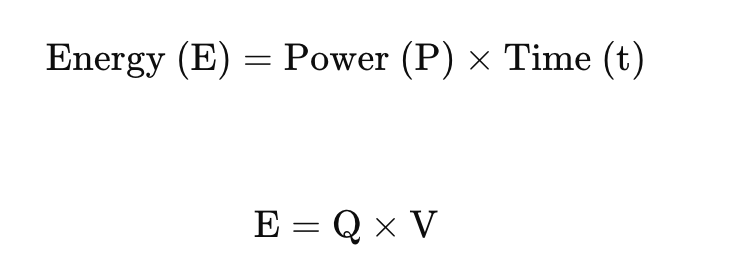Electricity
1. Electric Charge and Current
Electricity is the flow of electric charge, typically carried by electrons in a circuit. The size of the current depends on the rate of flow of charge:

Q is measured in coulombs (C)
I is measured in amperes (A)
t is measured in seconds (s)
A current will only flow through a circuit if there is a potential difference (voltage) across it and a complete closed loop.
2. Potential Difference and Resistance
Potential Difference (V) is the energy transferred per coulomb of charge:

Measured in volts (V)
A cell provides potential difference to push charges around the circuit.
Resistance (R) opposes the flow of current. The higher the resistance, the lower the current for a given voltage:

Resistance is measured in ohms (Ω)
3. Components and Circuit Symbols
Key components include:
Resistor: limits the current
Variable resistor: changes the resistance
Lamp: lights up when current flows
Diode: allows current in one direction only
Thermistor: resistance decreases as temperature increases
LDR (Light Dependent Resistor): resistance decreases as light intensity increases
Ammeter: measures current (in series)
Voltmeter: measures potential difference (in parallel)
Understanding how to draw and interpret circuit diagrams is essential.
4. Series and Parallel Circuits
Series Circuits
Components connected end-to-end
Current is the same throughout the circuit
Total potential difference is shared between components
Total resistance is the sum of individual resistances:

Parallel Circuits
Components connected across the same potential difference
Potential difference is the same across each branch
Current is shared between branches
Adding resistors in parallel decreases the total resistance
This is why household appliances are connected in parallel—to ensure they all get the same voltage.
5. Current–Voltage Characteristics
Not all components obey Ohm’s Law (where current is directly proportional to voltage):
Ohmic conductors (like resistors) have a linear I-V graph
Filament lamps have a curve because resistance increases with temperature
Diodes have very low current until a certain voltage is reached, then current increases rapidly
Understanding these graphs is vital for recognizing component behavior.
6. Electricity in the Home
UK mains electricity is:
AC (Alternating Current) at 230 V, 50 Hz
AC means the current changes direction
DC (Direct Current) flows in one direction (e.g., from a battery)
Three-core cables have:
Live wire (brown): carries current to appliance (at 230 V)
Neutral wire (blue): completes the circuit (at 0 V)
Earth wire (green and yellow): safety wire to stop appliances becoming live
Fuses and circuit breakers protect the wiring and users. The earth wire prevents electric shocks by providing a path to ground.
7. Electrical Power and Energy Transfer
Appliances convert electrical energy into other forms (e.g., thermal, light, kinetic). The power of an appliance is the energy it transfers per second:

Power is measured in watts (W)
To calculate energy transferred:

Energy is measured in joules (J)
In practical situations, this is used to calculate how much energy an appliance uses, which helps determine cost.
8. The National Grid
The National Grid is the network of cables and transformers that distributes electricity across the UK.
Power stations generate electricity
Step-up transformers increase voltage and reduce current to reduce energy loss during transmission
Step-down transformers decrease voltage for safe use in homes and businesses
High-voltage transmission is more efficient because less energy is lost as heat in the wires.
9. Static Electricity
Static electricity occurs when insulating materials are rubbed together, causing electrons to be transferred.
One object becomes positively charged, the other negatively charged
The charges are static—they build up and can discharge suddenly (like lightning or a shock from a doorknob)
Like charges repel, and opposite charges attract.
The force between charged objects is non-contact—it acts at a distance and gets stronger as the distance decreases.
10. Dangers and Uses of Static Electricity
Dangers:
Sparks can ignite flammable gases or vapors
Risk of electric shock
Precautions:
Earthing: connecting objects to the ground with a conductor to safely discharge excess charge
Insulation and conductive flooring can reduce risk
Uses:
Paint sprayers: charge the paint and object so paint spreads evenly
Photocopiers and air purifiers use static electricity to attract particles